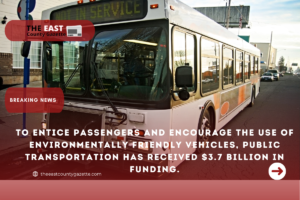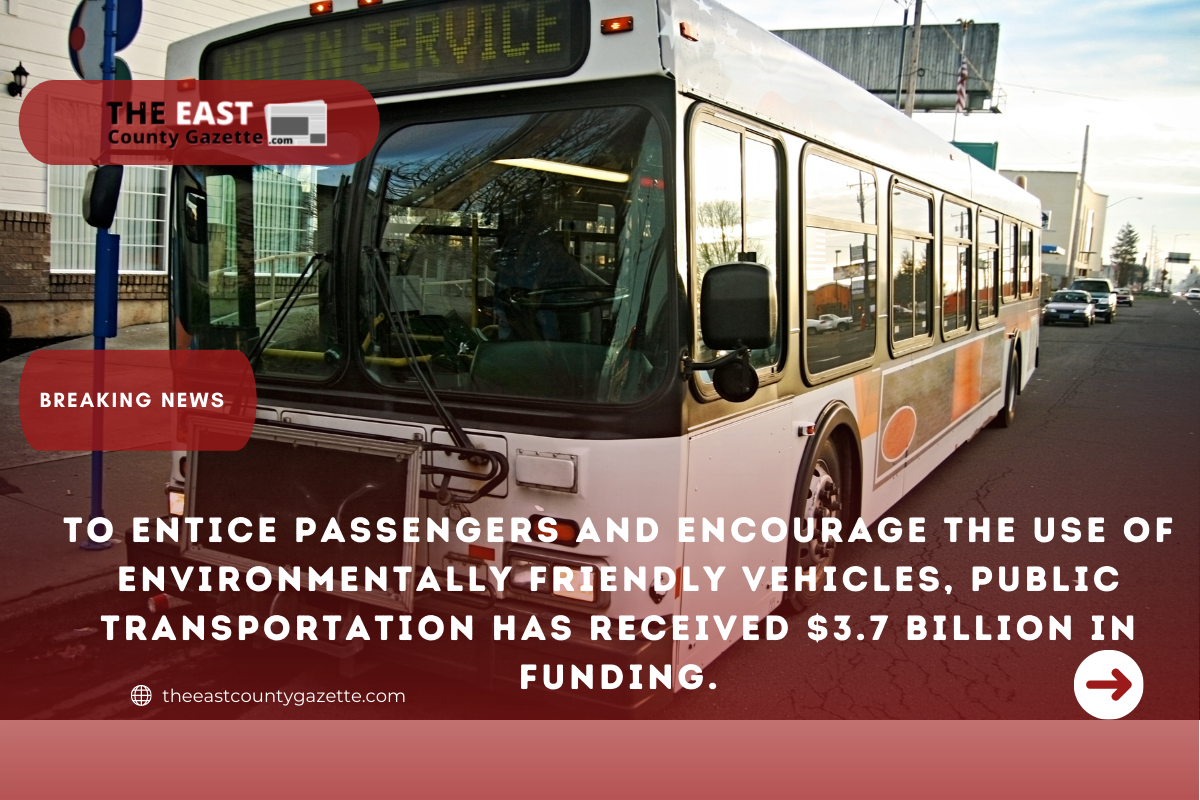To entice passengers and encourage the use of environmentally friendly vehicles, public transportation has received $3.7 billion in funding.
Public transportation networks that were decimated by the COVID-19 outbreak are receiving a massive financial injection to help them reopen and invest in new electric bus fleets.
American Rescue Plan funds totaling $2.2 billion will be distributed to 35 financially strained public transportation systems across 18 states, the Biden administration announced on Monday.

Staffing and salaries as well as cleaning and sanitization to prevent the spread of illness in public transit would be funded by the money. Until at least March 18, a federal mask mandate is still in effect for public transportation.
Additional subsidies totaling $1.5 billion under President Joe Biden’s infrastructure program will be made available over the next five years for transit agencies to purchase low- or no-emission buses manufactured in the United States and to establish bus facilities. This year’s total is more than twice what it was the year before.
It comes at a time when mask regulations and other COVID-19 limitations are vanishing in large parts of the United States. The administration is encouraging zero-emission transit as families rebuild new travel routes to work and school as more people begin to return to offices.
As a result of the pandemic, the number of people using public transportation has fallen to 55% of pre-pandemic levels. Suburban commuters have been enticed to use public transportation by reduced or free fares across the country, from Washington, D.C., to Boston and Chicago.
People who need medical care or want to go to sporting or entertainment events are taking advantage of reduced rush-hour bus and subway service in favor of more journeys at other times of the day.
When announcing the White House’s plans on Monday, Vice President Kamala Harris remarked, “Our transportation industry has reached a tipping point.”
It’s possible to clean the air and protect our children’s health, she stated. The affordability, accessibility, and dependability of public transit are within our grasp. At the same time, we can work to alleviate the effects of climate change.”
Transportation Secretary Pete Buttigieg and EPA Administrator Michael Regan were in attendance.
New tractor-trailer rig pollution restrictions to clean up diesel engines were also announced, as was $17 million in financing for school districts to purchase electric zero-emission and low-emission school buses. Humans may experience respiratory issues as a result of the emissions.
Buttigieg called public transportation a “win-win” solution for decreasing air pollution because it is both cost-effective for commuters and relieves traffic congestion. Car and truck tailpipe emissions are the primary sources of U.S. greenhouse gas emissions.
With the largest ever investment in this program for buses and bus infrastructure, we’re helping deliver better commutes and healthier air to American neighborhoods,” Buttigieg claimed.
The deadline for transit agencies to apply for the subsidies, which will be given out in the fall, is May 1. A minimum of 5% of the funds must be allocated to transit workers’ education and training in light of the impending technological shift.
Electric buses have already begun making their way into public transportation systems. California, New York City, and Boston have all pledged to have all-electric bus fleets in place by 2040. A goal date of 2045 has been set by Washington, D.C.
The endeavor comes at a time when public transportation is having difficulty.
Even if ridership returns to pre-pandemic levels, transit officials believe it could take years, if ever. Commuter rail lines serving white-collar suburbanites who commute to downtown workplaces have suffered the greatest losses.
As the number of cases of COVID-19 decreases, Vice President Biden has urged Americans to stop working from home, saying that returning to the workplace is essential to spurring economic growth.
In his State of the Union address, Vice President Joe Biden remarked, “It’s time for America to get back to work and fill our beautiful downtowns again with people.
Transit systems in major cities were among the recipients of COVID-19 relief funding on Monday.
The largest transportation authority in the country, the Metropolitan Transportation Authority in New York City, received $769 million to keep things running smoothly, while the Bay Area Rapid Transit in San Francisco earned $270 million to improve service and safety.
Over 90 percent of subway ridership was lost during the pandemic, and the MTA plans to utilize the money to compensate for that loss. There has been a steady recovery of New York City subway users, but by the end of 2024, ridership will have fallen by 10% to 20% below pre-pandemic levels.
To date, the MTA has received $15 billion in federal aid, and it expects that the additional monies announced on Monday would save it from having to employ deficit financing to fill a budget gap that is estimated to reach well over $1 billion by 2025 when the COVID relief money runs out.
A grant from COVID Relief will allow BART in San Francisco to prolong service by one year through 2025, on top of the $1.3 billion in government funding already received. About 30 percent of pre-pandemic ridership occurs during the workweek.
Only about half of pre-pandemic customers are now utilizing BART on weekends, according to Alicia Trost, a BART spokesperson.
Washington, D.C., received $120 million in aid to prepare for the return of government employees to their workplaces, while Houston received $137 million in aid to expand its rapid transit bus network.
According to FTA Administrator Nuria Fernández, “These funds are critical to avoid significant service cuts and layoffs that would harm the economy and public health,” she stated.
When the pandemic began, transit agencies curtailed services and cut salaries. Workers who are disproportionately nonwhite and low-income have continued to rely on public transportation as a means of transportation to their jobs despite this.
Federal COVID-19 emergency assistance, including $30.5 billion signed into legislation by Vice President Biden last year and totaling roughly $70 billion, saved transit agencies from financial collapse.

